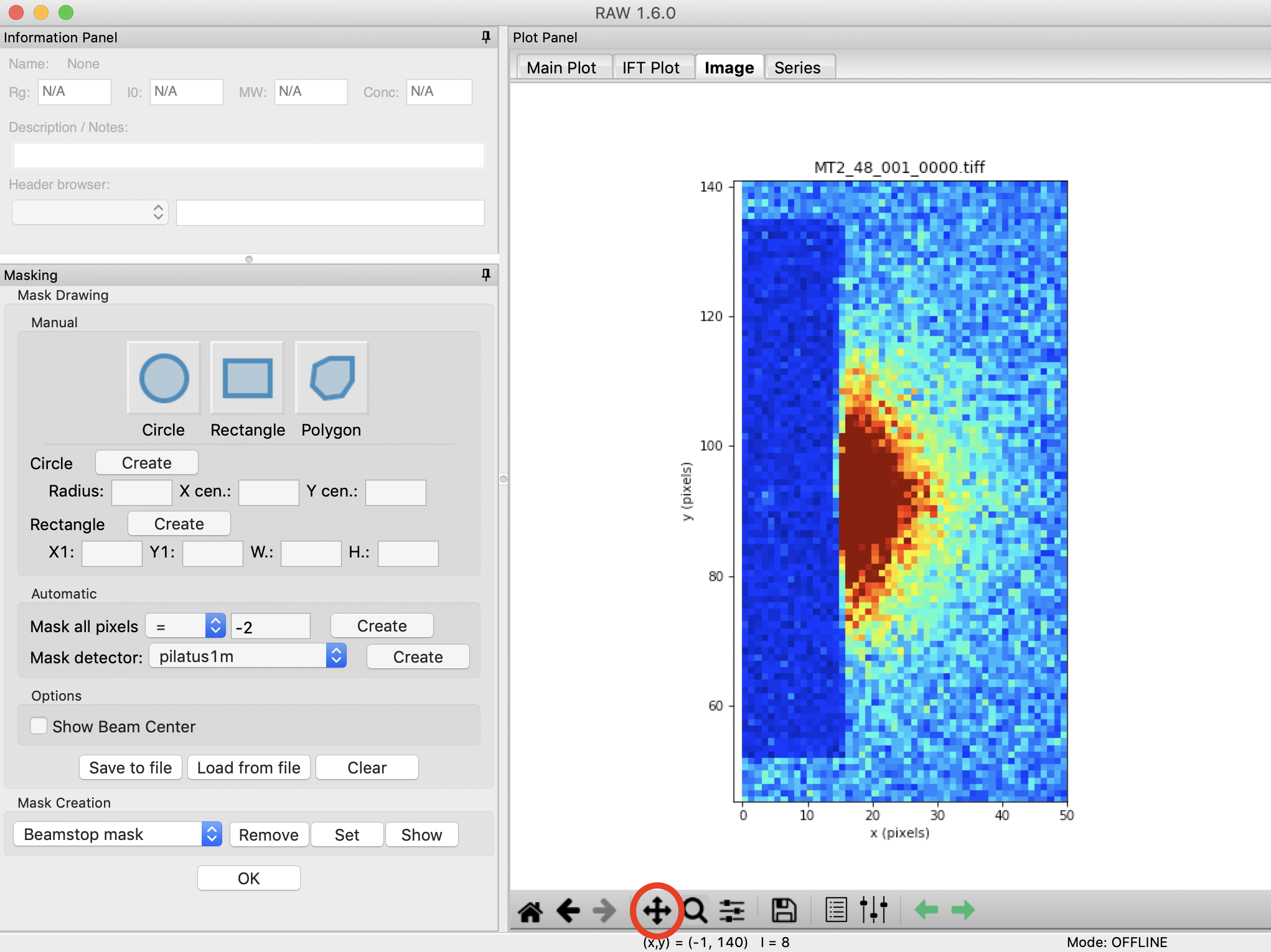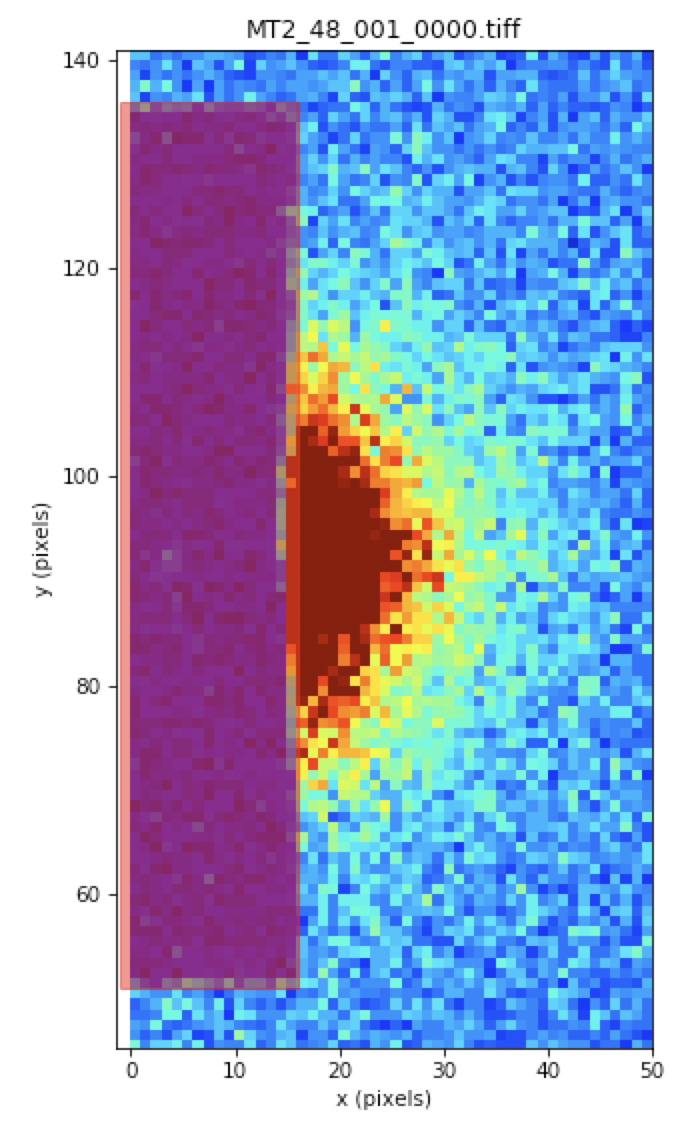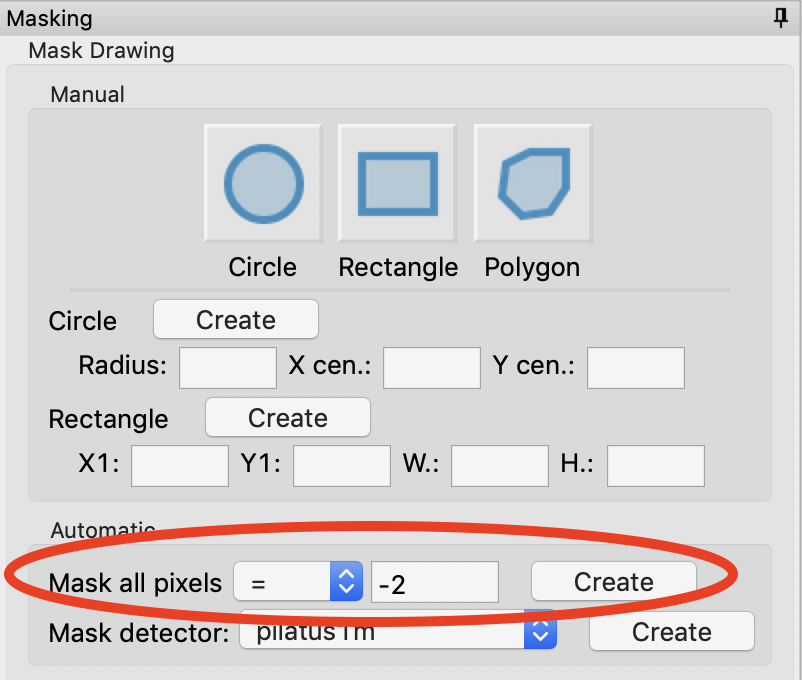Masking¶
This section teaches you how to mask out unwanted portions of your image, such as the beamstop and bad detector pixels. It assumes you have just done Part 1 or 2. If not, open RAW as in Step 1 and set your data folder as in Step 6 of Part 1.
In the Files tab, select the MT2_48_001_0000.tiff file and click the show image button.
Set the image upper limit to 50.
Open the masking panel by clicking “Masking” in the Tools menu.
Zoom in around the beamstop.
- Note: The beamstop is the blue rectangular area on the left edge of the detector
Select the Pan tool and left click and drag the image to the right until you can see a blank (white) canvas to the left of the beamstop.

Click on the rectangle mask drawing button and click on a point in the white part of the canvas just above the edge of the beamstop.
Move the cursor until the red outline of the rectangle covers the beamstop from top to bottom, and out to the right edge of the middle of the beamstop. Click again to make the rectangle mask.
- Note: There will still be a bit of the beamstop at the bottom right edge that is not covered by this rectangle.
- Tip: If you mess up drawing the mask, click on the masked region (shaded red) and click your backspace/delete key to remove it.
- Tip: You can also resize a rectangle (or circle) mask my right clicking on it and selecting resize.
- Tip: You can create a rectangle of defined position and size by entering the x and y coordiantes of the bottom left corner and the width and height of the rectangle then clicking ‘Create’.
This beamstop is quite square, so a simple square mask works. A circle is also easy to draw:
- Click on the Circle mask drawing button.
- Click at the center
- Move the mouse out to make it the size you want, and click again to finish the circle.
- Tip: Like a rectangle, you can also draw a circle of defined position and size by entering the radius, x center, and y center, and click the ‘Create’ button.
If you need to draw another (non-square or circle) shape, you would do the following:
- Click on the Polygon mask drawing button. Left click to place the first vertex.
- Continue left clicking to place more vertices to draw the desired shape.
- Right click to connect the last point you put down to the first point, and finish drawing the polygon.
Zoom back out to the full extent of the image.
Next you need to mask out the bad pixels on the detector. On a Pilatus detector, bad pixels usually have a value of -2.
In the automatic section of the Mask Drawing controls, set Mask All Pixels = -2 and click ‘Create’.
- This control allows you to mask pixels at, above, or below a given threshold. It is particularly useful for things like bad pixels, where the value is known.
In the masking panel, make sure that “Beamstop mask” is selected in the Mask Creation dropdown menu. Click the set button to set the mask you just made as the beamstop mask.
Click the OK button to exit the masking panel.
Additional Tips
- If you have a larger detector with panel gaps, the Mask detector function in the Automatic section of the Mask Drawing tools will generate a gap mask for many different detectors.
- You can resize rectangle and circle masks by right clicking on them and selecting resize.
- You can ‘invert’ a mask, which for a beamstop mask means it will only include pixels in the mask. This can be useful if, for example, you have a circular shadow from your flight tube on your detector.
- If you know the mask parameters, you can put in coordinates for a circle or rectangle and create a mask with a known position and size.


